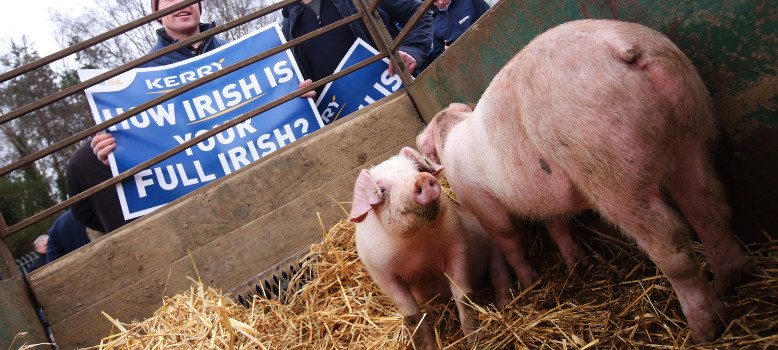The Pig League

IFA Pigs Executive Deirdre O’Shea summaries the current price situation and market outlook for pig farmers.
Pig prices in March, although at very low levels, remained steady throughout the month. Any further drops would undoubtedly have forced more farmers to close the gates and exit the industry. Average price for the month has slipped 2c/kg behind February prices. March 2016 prices are 10c/kg behind 2015 prices for the same period.
The first Friday in April has brought about some relief for producers with a 4c/kg increase. However, the reality is this upward trend needs to continue for the next five weeks in order for farmers to even reach breakeven point.
Decline in EU reproductive herd
The December livestock survey confirms an approximate 2% year-on-year decline in the EU breeding sow herd.
This 2% equates to around 200,000 sows. The main decreases are coming from Poland, Germany, Holland and France. However, the Spanish herd has increased in the same period in excess of 100,000 sows. Significantly cheaper building material costs and more integrated business models are the main reasons for their ability to increase during a time of crisis in the European pig industry.
Although pig prices were historically low during 2015, the production slowdown didn’t kick in until the second half of the year, resulting in a 3.6% increase on a yearly basis.
To no great surprise, the largest production increase was recorded in Spain (+276,000t). It is estimated that pigmeat production will stabilise during 2016, or decrease slightly. A slight increase of less than 1% is expected in 2017. EU pigmeat exports increased 9% in volume terms in 2015 (year-on-year). The main factors contributing to this significant increase were lower EU meat prices, a favourable euro and a strong demand from Asia.
EU exports to China in 2015 reached around 500,000t, which was almost double 2014 volumes. In 2016, EU exports are expected to expand further but at a slower pace (3%). Increased competition and availability of pigmeat from USA and Brazil will cause a slowdown in EU exports during 2016.
A WTO ruling on the sanitary ban preventing EU export of certain pigmeat products to Russia is expected in April 2016. However, the assumption is that the sanitary ban will remain in place for 2016 and 2017, effectively blocking all exports to Russia. In the meantime, Russia’s plans to reach self-sufficiency are progressing at a fast pace.
In total, 154,000t of pigmeat was put into storage under the two private storage schemes in March 2015 and January 2016. The majority opted for 90 days storage. The meat stored in January will be removed from storage before summer, while the time of removal of last year’s contract was during the summer months. Therefore, the exact impact on the market may be slightly different.
EU consumption of pigmeat increased almost 1kg per capita in 2015 up to 32.5kg. This level of consumption is expected to stabilise or decrease slightly in 2016, following the trend of the previous decade.
There is a strong feeling among not only producers, but the wider industry, that pigs have become the “forgotten industry”, with very little support from Government during what is one of the most turbulent times ever experienced by the industry.
Although the number of farmers involved in the sector may be small, the Irish pigmeat industry accounts for 8% of the total output value (€471m) of the agrifood sector and is the third most important sector after dairy and beef. With farmers currently receiving €1.39/kg for their produce and production costs running at €1.58/kg, the average pig farmer is losing almost €5,000 every week they continue to operate in business.
Support needed
This is a situation that needs Government intervention and a payment of €3,000 per farmer announced by Minister Coveney earlier this year, which has yet to be paid to farmers, was seen as a mere insult to many. A clear strategic plan needs to be developed by all players if Ireland is to have an industry into the future.




